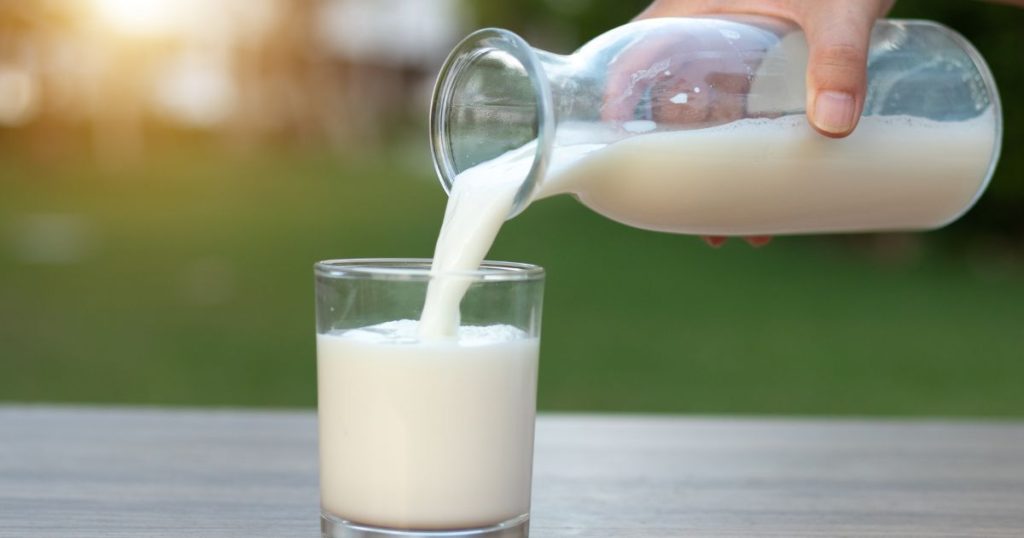Nature Versus The Business Of Food
“All truth passes through three stages. First, it is ridiculed. Second it is violently opposed. Third, it is accepted as being self-evident.” Arthur Schopenhauer
From a marketing perspective, milk is often described as “Nature’s Perfect Food”. It is recommended by traditional doctors, television ads and even our own mothers. After all, milk builds strong bones and teeth, it’s natural, and it’s loaded with calcium. This is what many people still believe.
So the new truth is, we are the only species on earth to continue consuming milk past the age of weaning. If milk is such a good thing, why are thousands of North American women being diagnosed with osteoporosis? Cow’s milk and cow’s milk products are the highest mucous foods you can consume. They clog the blood and arteries leading to heart disease. The hormones in milk have been implicated in promoting fibrocystic breast disease and breast cancer. They are the leading cause of childhood ear infections, asthma, sinusitis, allergies, excess mucous, weight issues and behavioural disorders. What about the increase in childhood cancer and juvenile diabetes rates? The list goes on and on. Clearly it’s not as nature intended.
What did nature intend? Well, if we go back to times before food became a business, we see that cows were treated more humanely and not kept in stalls all their lives. We see that cows were in the pastures and were grass-fed. The animals were not treated with hormones, fed antibiotics, or other unnecessary drugs, so their products were healthy, wholesome and natural in every sense of the word.
Raising animals on pasture is better for the animals, the farmers, and the environment. Just as important, grass-fed products are better for your health. They are lower in total fat and calories but richer in “good” fats such as omega-3 fatty acids and the cancer-fighting fat, CLA. Conjugated linoleic acid or CLA has demonstrated a multitude of benefits in animal studies, including fat reduction, increase in lean muscle mass, reduced risk of diabetes, reversal of arteriosclerosis, and a marked reduction in tumor growth. Grass fed milk has up to 500% more CLA. In New Zealand today, all cattle are grass-fed, thus insuring a high nutrient content of their milk, butter, and meat.
So what happened when food became a business? Most of the meat, poultry, dairy products and eggs available in your grocery store come from animals that are raised in large confinement facilities where they are fed grain-based diets and treated with a variety of drugs. Today’s milk comes from cows that live in over-crowded conditions with limited space to move around. Disease spreads quickly and many antibiotics are used to treat the sick animals.
Hormones, chlorine, pasteurization, homogenization, added synthetic vitamins are all used in the production of milk. Cow’s milk, both regular and organic, contains up to 59 active hormones, high fat content and hundreds of allergens. And if these were not enough, milk contains high amounts of herbicides, pesticides, antibiotics, blood, pus and a variety of bacteria and viruses.
Sure, homogenization and pasteurization can kill most of the bacteria, but not the toxins these bacteria create. These high heat processes also destroy the nutrients present in the raw milk. What is left behind is nothing more than a ‘dead beverage’ with a high amount of pesticides and other dangerous chemicals in it.
Pasteurization also changes the casein so that it combines with and immobilizes any calcium it comes in contact with. Therefore the casein binds the calcium in milk so the human body does not absorb it. There goes the notion that you are getting your calcium when you drink your milk. Better sources of calcium are green vegetables, sea vegetables (particularly Hijiki which contains 1400 mg calcium per l cup), fish, organic nuts, goat’s milk or cheese, molasses, grains, fruit and kefir. If you’re really concerned about calcium intake, use a high quality calcium/magnesium supplement like Shaklee’s Cal/Mag which has been tested for good absorption.
In addition, pesticide residues with estrogenic properties are consumed in the food that is given to these animals and are subsequently concentrated in the milk. These harmful estrogens are then deposited in our fatty tissues and on estrogen and progesterone cell receptor sites, where they are known to interfere in the proper utilization and production of progesterone and estrogen.
Other issues with milk are that it is very difficult for humans to digest cow milk protein. Cow milk is produced for a calf, not a human. Calves double their weight in 47 days and grow to 300 pounds or more within a year. Cow milk contains protein molecules that are much larger than the protein in human milk and three times the amount of human milk. This shows up dramatically in children. Since the intestines are still forming, these large molecules poke holes in the wall of the intestine leading to what is referred to as “leaky gut” which leads to allergies.
Many people develop lactose intolerance, which is the inability to digest the milk sugar lactose. This is a result of the fact that after the age of four, their bodies stop producing the enzyme lactase, which is necessary to digest the lactose.
Cow’s milk and other dairy products are high in fat. The dairy industry has cleverly expressed fat content as a percentage of weight. Using this system, 2% milk, which is 87% water by weight, sounds like a low-fat product. Expressed as a percentage of total calories, 2% milk is in fact 35% fat. 1% is 23% fat. Whole milk is 49% fat. Yogurt is 49% fat, cheese is 40-77% fat and butter is 100% fat.
So the bottom line with milk consumption, is that we need to think whole food again. It is time for us to stop supporting the food business, which is not supporting our health. I believe that the diseases we are experiencing from consuming denatured products are a wakeup call. Personally, I will continue to avoid denatured products dairy or otherwise, and support products from New Zealand and whole foods. I encourage you to do the same. It is time for us to embrace and live in harmony with nature once again.
There are many “milk” alternatives now. Check them out.
To your good health!
Charlene




honey ! — How are you ? great to read this blog about Milk . I am very glad to have all that milk information , so helpul ! THANKS !
My Love to you and your family
Hoping happy days for all and good heath too !
Warm Febuary hugs to you CHARLENE,
SARAH Bunett – Gibson
Great to hear from you Sarah. Warm hugs back to you and your family. Glad you enjoyed my blog post. Love to hear from you again. Charlene